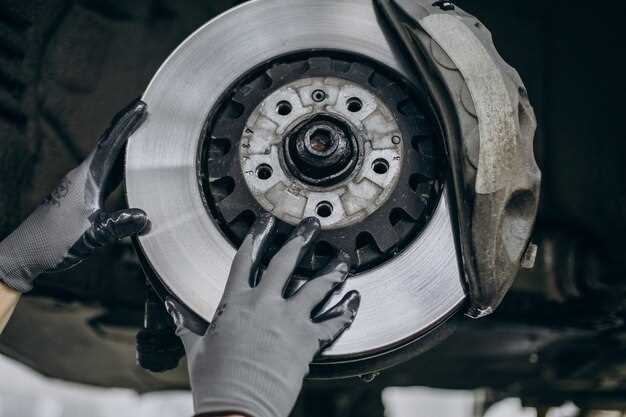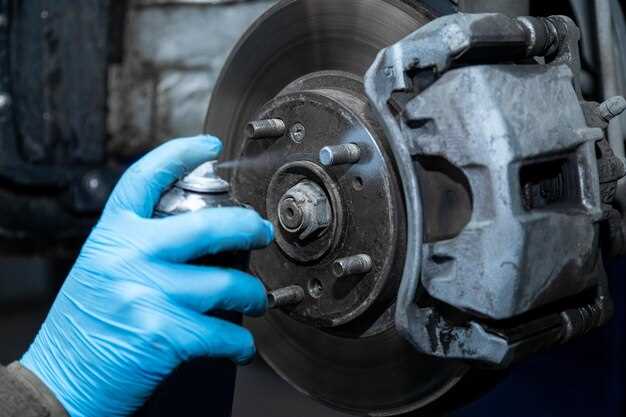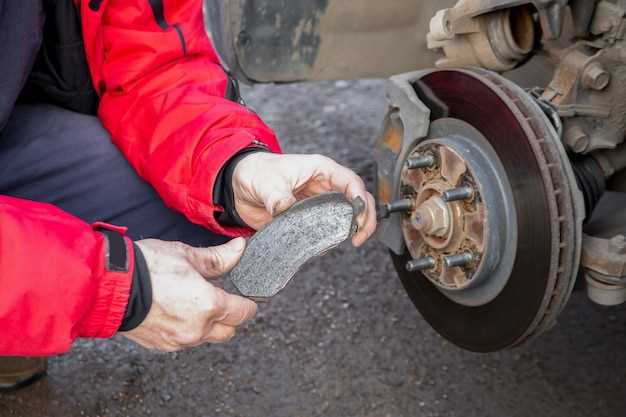
Understanding when to replace the brake pads and rotors on your truck is crucial for maintaining safety and performance on the road. Over time, these components wear down due to constant friction and heat generated during braking. Recognizing the signs of wear is essential for any truck owner committed to vehicle longevity and safety.
Common indicators of worn brake pads include unusual noises, such as squeaking or grinding sounds, which often signify that the pads have exceeded their operational lifespan. Additionally, a noticeable decrease in braking performance, such as the truck taking longer to stop or the brake pedal feeling soft, can signal that replacement is necessary. Ignoring these symptoms can lead to further damage to the brake rotors, making timely intervention critical.
It’s also important to consider the timing of brake maintenance based on usage. Heavy hauling or frequent stop-and-go driving can accelerate wear, suggesting that more frequent inspections and replacements might be needed. By understanding these signs and timing for replacing truck brake pads and rotors, truck owners can ensure their vehicle operates safely and efficiently, reducing the risk of costly repairs in the long run.
Signs and Timing for Replacing Truck Brake Pads and Rotors

Ensuring the safety of your truck relies heavily on the condition of its brake system. The brake pads and rotors endure significant wear and tear during operation, making timely replacements essential. Recognizing the signs for replacement is crucial for maintaining optimal performance.
One of the primary indicators that brake pads are due for replacement is a persistent squeaking or squealing noise when braking. This sound often originates from wear indicators designed to alert drivers of pad degradation. Additionally, if you experience a grinding noise, it may indicate that the pads have worn down completely, causing metal-on-metal contact, which can damage the rotors.
Another significant sign is increased stopping distances. If you find that your truck takes longer to come to a complete stop or requires more pressure on the brake pedal, it is a clear indication that the brake pads or rotors may be worn and need immediate attention.
Visual inspection can also be a useful method for determining the condition of brake components. If the brake pads appear to be less than a quarter-inch thick or show signs of cracking, warping, or excessive wear, it’s time for a replacement. Similarly, check the rotors for grooves, scoring, or any discoloration that may signify overheating.
Regular maintenance schedules should include brake inspection, typically every 12,000 to 15,000 miles or as recommended by your truck’s manufacturer. However, heavy usage or frequent stop-and-go driving may necessitate more frequent checks. Listening to the truck’s braking response and monitoring performance can help in identifying the right timing for replacements.
Prioritizing brake system upkeep not only enhances the safety of your truck but also extends the lifespan of braking components. Therefore, stay vigilant for these signs and ensure timely replacements to maintain safe driving conditions.
Identifying Warning Signs of Worn Brake Pads
Recognizing the warning signs of worn brake pads is essential for maintaining the safety and performance of your truck. Ignoring these indicators can lead to more significant issues and increase the risk of accidents. Here are key signs to watch for:
- Squeaking or Squealing Sounds: If you hear a high-pitched noise when applying the brakes, this often indicates that the brake pads have worn down and need replacement.
- Grinding Noise: A grinding sound can signal that the brake pads are severely worn, causing metal-to-metal contact and potential damage to the rotors.
- Vibration or Pulsation: If you feel vibrations in the brake pedal, it may indicate uneven wear on the brake pads, which can compromise stopping power.
- Indicator Lights: Many modern trucks are equipped with a brake warning light. If this light appears on your dashboard, it’s essential to check the condition of your brake pads immediately.
- Thinning Brake Pads: Visually inspecting the brake pads can provide insight into their condition. If they appear thin (less than 1/4 inch), it’s time for replacement.
- Brake Dust Accumulation: Excessive brake dust on your wheels can indicate worn brake pads, as they break down and create particulate matter during use.
Regularly monitoring these signs and conducting maintenance will significantly enhance your vehicle’s safety. If any of these symptoms appear, consult a professional mechanic to assess and replace the brake pads as necessary.
Understanding the Lifespan of Brake Rotors in Trucks
The lifespan of brake rotors in trucks is crucial for maintaining optimal braking performance and overall vehicle safety. Typically, brake rotors can last anywhere from 30,000 to 70,000 miles, depending on various factors such as driving habits, truck type, and the quality of the brake pads used.
Heavy-duty trucks, often subjected to heavier loads and more frequent stops, may experience quicker wear on their brake components. This increased usage can result in greater heat generation, leading to warping or deterioration of the rotors. Similarly, aggressive driving styles, including rapid acceleration and harsh braking, can significantly reduce rotor lifespan.
Moreover, the quality of brake pads plays a substantial role in rotor longevity. High-quality pads designed for better performance can minimize rotor wear, while lower-grade pads may contain abrasive materials that can hasten deterioration. It is essential to select the right pads to ensure the rotors remain in good condition for as long as possible.
Regular inspections are vital for monitoring the condition of brake rotors. Signs such as vibrations during braking, unusual noises, or decreased braking efficiency indicate that it may be time to inspect or replace the rotors. Maintaining proper rotor thickness is also critical, as warped or excessively worn rotors can lead to brake failure.
In summary, understanding the lifespan of truck brake rotors is essential for ensuring safety and efficiency. By considering factors such as usage patterns, material quality, and regular maintenance practices, truck owners can make informed decisions about replacing brake components before they compromise vehicle performance.
Safety Risks of Delaying Brake Replacement in Trucks

Neglecting to replace worn brake pads and rotors on a truck poses significant safety risks. The most immediate danger is compromised stopping power, which can lead to longer stopping distances, increasing the likelihood of accidents. When brake pads wear down, they fail to provide adequate friction, causing the truck to take much longer to halt, especially under heavy load conditions.
Moreover, delaying brake replacement can result in damage to the rotors. Worn pads create excessive heat and friction, leading to warped or cracked rotors that require costly replacement. This compounded damage not only affects braking efficiency but also escalates repair expenses. In extreme cases, brake failure can occur, resulting in catastrophic accidents that threaten the safety of the driver, passengers, and other road users.
Additionally, the psychological impact of unreliable brakes cannot be underestimated. Drivers operating trucks with delayed brake maintenance may experience increased anxiety, leading to impaired focus on the road. This heightened stress can further compromise decision-making skills, contributing to hazardous driving behavior.
Regular maintenance and timely replacement of brake pads and rotors are crucial for ensuring vehicle safety. Routine checks can identify wear early, allowing for necessary interventions before the situation escalates. Prioritizing brake system health not only enhances safety but also contributes to overall vehicle performance and longevity.




